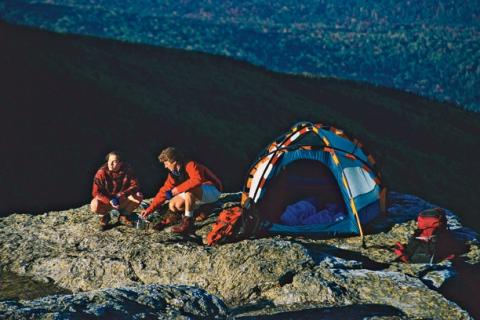
With the elements at odds with you, camping in the fall and winter — even during milder weather — can be challenging. A sudden drop in temperature in the night or unexpected precipitation can really put a damper on a trip and even put you in danger.
Having the right camping equipment at your site and in your tent, however, can help you enjoy your cold-weather excursion and get a good night’s rest.
Here's a camping and hiking safety tip from Coleman on how to zip two sleeping bags together should the need arise.
{"preview_thumbnail":"\/\/afd-production-eru2ractomp34-gjdjeybzcubvfrgz.z01.azurefd.net/sites/default/files\/images\/videos\/109\/thumbs\/1802267.mp4_00002.png\" scrolling=\"no","video_url":"https:\/\/1source.basspro.com\/video\/camping\/1279\/how-zip-two-sleeping-bags-together","settings":{"responsive":1,"width":"660","height":"395","autoplay":0},"settings_summary":"Embedded Video (Responsive)"}
Along with all the cold-weather gear you’ll need to wear to bed -- fleece clothing, wool socks and hat, a synthetic base layer, etc. -- this is what you’ll need to take along to outfit your tent site:
- A high-quality sleeping bag & blanket. Purchase a sleeping bag that is rated for temperatures lower than you expect to have and is insulated with down or synthetic down; you can always unzip the bag if you get too warm. Drape a wool blanket over the top of your sleeping bag to protect it from moisture and keep it working at an optimal level.
- Sleeping bag liner. In case of unexpectedly low temperatures, bring along a sleeping bag liner to add extra warmth.
- Two insulated sleeping pads. These provide you with cushioning for added comfort, get you up off the ground, and, most importantly, keep the cold temperature from the ground from reaching your body.
- A ground cloth. Place a ground cloth under your tent to keep moisture from seeping into your sleeping area.
- A winter-grade tent. You need a dome-shaped, four-season tent with a rain fly that extend to the bottom of the tent. It should be quick to set up and provide protection from the elements. Be sure to pitch your tent in an area with a natural wind block that’s also clear from potential falling branches.
An alternative to this is a truck tent, which is a great option for those who would rather not sleep on the ground once winter sets in. Read these tent buying tips more information. - A hot-water bottle. Use this at the foot of your sleeping bag to keep warm, but beware of leaks!
Carefully selecting your gear to guard you from the elements will help make your cold-weather camping trip both safe and enjoyable.
Happy camping!
- 4720 views

